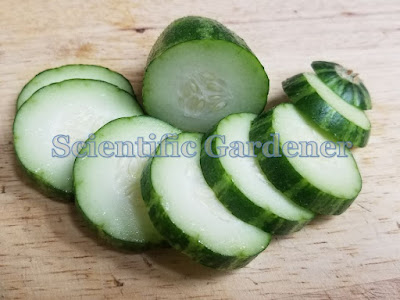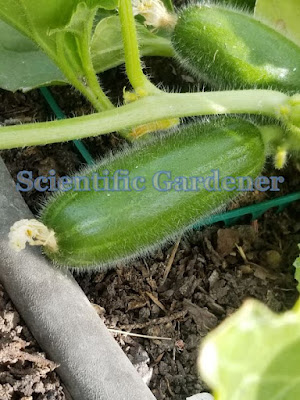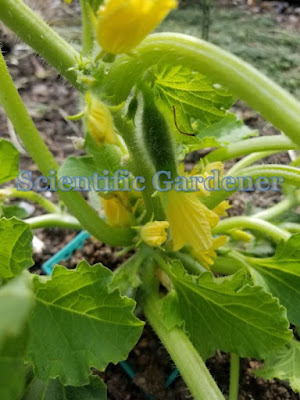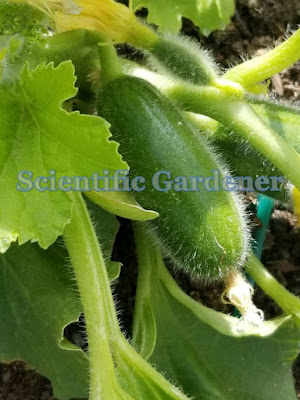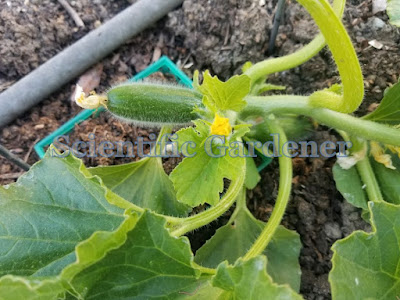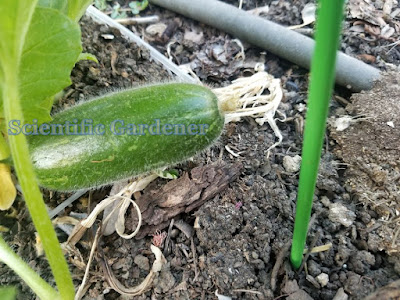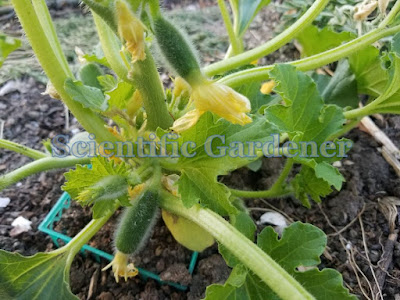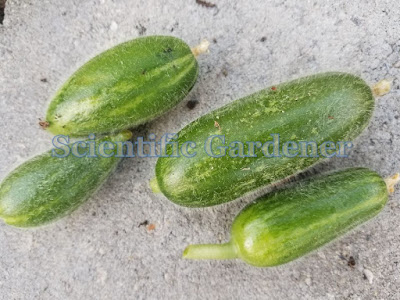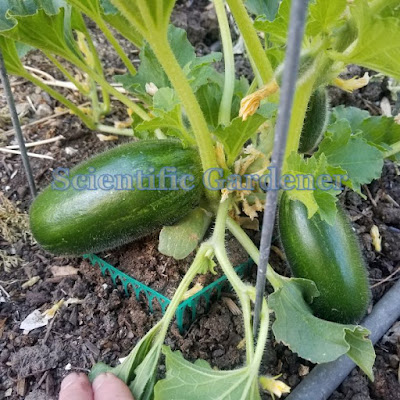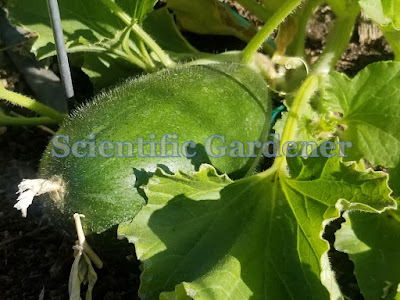Very rarely do I come across a variety as good as the Carosello Spuredda Leccese Scuro. This is a dark green variety with a smooth skin and an exceptionally good rich flavor. While I had grown other variants of dark green Leccese carosello, I continued to struggle to find this beautiful variety.
 |
| Pillbug damage on a female blossom |
To clarify, it can be extremely difficult to find any carosello that is truly 100% dark. The majority of the time, even the very dark fruit begins with some light color and become darker based on genetics and the prevalence exposure to direct sunlight. The difference between this and other dark Leccese varieties I have grown is that this one does not retain the light color as much, but instead becomes darker as the fruit grows. Additionally, this variety has a much higher proportion of water content and a much more marketable texture.
Unfortunately, I was not able to get all I wanted out of this crop this year. Despite giving all I could to the soil in the chicken garden, for various reasons, the Carosello Spuredda Leccese Scuro this year did not perform very well in this plot. One of the main factors was that the area in which this variety was grown was chock full of other plants – especially tomato plants - which really drained the life out of the cucumbers. Even with plenty of nitrogen-rich fertilizer, it seems that tomatoes may have even strip the soil exudates from around adjacent cucumber roots. In addition to the tomatoes, the lackluster performance of the soil (which I have been consistently amending for years) lead me to throw my hands up to growing cucumbers in the chicken garden.
So, I discovered a really good carosello variety, but I grew in in a poor plot. Now what? Due to the nature of the soil and the garden, I decided to try another variety and come back to the Carosello Spuredda Leccese Scuro when I could give it the time and attention it deserves.










